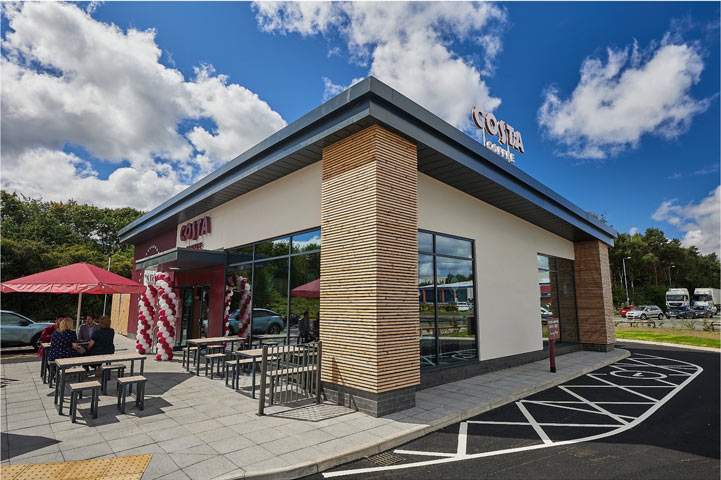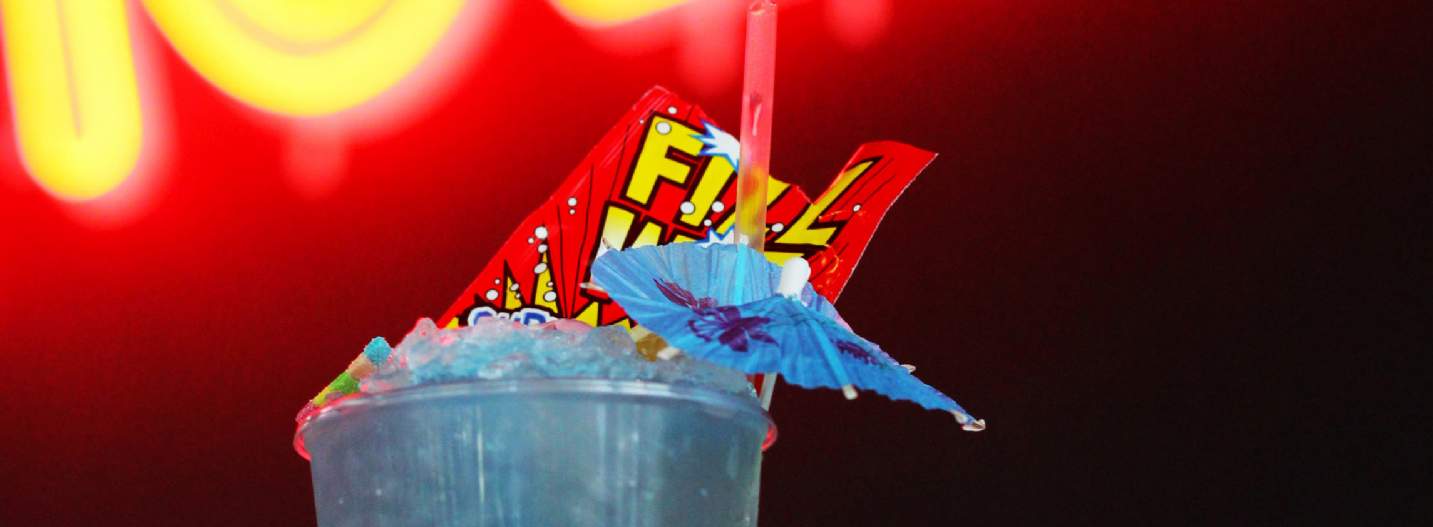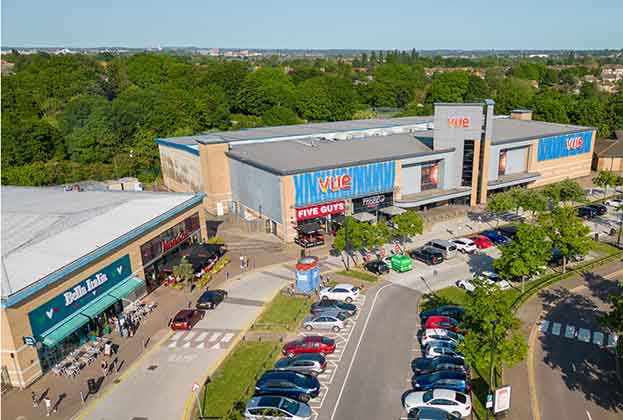Leisure spending has seen a continued uptick in performance over the last 12 months, in spite of consumer belt-tightening and cost of living increases
key consumer and occupational trends
When headlines regarding the cost of living, surging product prices, and a recessionary environment took hold in 2022, we saw a dramatic uptick in inflation; the Consumer Prices Index (CPI) reached double-digits for the second time in September that year and remained there until the end of Q1 2023.
Since last April, however, inflation has been trending steadily downwards. Most recently, CPI rose by 4.0% in the 12 months to January 2024, the same as the previous month but up from 3.9% in November. Despite this marginal increase, it remains a significant improvement on its most recent peak in October 2022 at 11.1% and represents the first time the rate has increased at all since February of last year.
At the same time, we have seen a steady rise in consumer confidence. Currently, the GfK index stands at -29.3 on a rolling twelve-month basis, below the -10.9 average of the last two decades but 12.8 points higher than in March last year, the lowest point the index has fallen in the last 20 years.
The obvious conclusion to any improving customer fortunes is a similar uptick in the performance of each of the UK’s leisure subsectors. Revolut card spend data supports this notion; both entertainment and pub, restaurant and fast food spend collectively, have been trending above their long-term averages for some time, on a rolling seven-day basis (Figure 1).
This is perhaps unsurprising considering the comparatives include the doldrums experienced through the Covid era. Nevertheless, entertainment spend, which includes membership clubs, cinemas, ticketed events, sports, galleries, and tourist attractions, has also performed above its pre-Covid benchmark at a number of significant points throughout 2023. Easter and the summer months saw the biggest spikes in entertainment spend, peaking in July at 240 basis points above the mean for February 2020.
Meanwhile, pub, restaurant and fast food spend has seen even more impressive results. Spending between May and November 2022 indexed above pre-Covid levels. Most recently, February to November 2023 saw the same level of performance, peaking in the summer months at 400 bps above the February 2020 benchmark. In both 2022 and 2023, there was a brief hiatus in pub, restaurant and fast food spend in the run-up to Christmas, where, once again, performance indexed above the criterion before typically slowing in the post-festive period.
GlobalData’s monthly survey of 2,000 consumers, and their monthly spending activity (carried out among a representative sample of the population in terms of demographics and geography), does much to support the findings of Revolut’s card spend index (Figure 2). It suggests consumer spend on leisure activities has remained elevated for some time. It has, in fact, trended significantly above the August 2018 index base since April 2021, as we emerged from the pandemic-driven dip in participation that came with the government's lockdown initiatives. December 2023 saw the index reach 142.4, which implies we saw 42.4% more spent on leisure as people geared up to celebrate over the festive period, compared to the pre-Covid benchmark. This is an increase of 15.8 on the previous month and 21.9 versus December the previous year.
Although it may seem counter-intuitive, elevated performance in certain leisure sectors is not unusual when consumers seemingly swing into belt-tightening mode. With the austerity we have witnessed over the last two years, the retail market has seen an increased focus on trading down and value-orientated shopping. This, in turn, has allowed consumers to make savings in their everyday, essential purchases and elevate the funds at their disposal that allow them to prioritise experiences – with many consumers still keen to make up for lost opportunities during the pandemic or keen to escape the pressures of a tightening economy.
The strong performance of pubs compared to restaurants suggests the consumer has been opting for a more affordable casual dining experience than a more formal restaurant meal
Sam Arrowsmith, Director, Commercial Research
Figure 3 highlights Barclaycard spend in 2023, in which hospitality and leisure spending grew by 10.3% over the year. There was growth across a number of subcategories too, including eating and drinking (7.1%), pubs, bars and clubs (6.8%) and takeaways and fast food (7.8%) – undoubtedly a positive result for the leisure market. Meanwhile, it was the bigger-ticket and non-essential spend that saw the largest declines, including DIY (-4.7%), electronics (-2.9%) and furniture sales (-4.8%) as consumers look to make savings and redistribute their expenditure elsewhere.
Despite an uptick in performance across several leisure pursuits, restaurants actually saw a spending decline of -6.3% in 2023 on Barclaycard card transactions, despite the overall uptick in eating and drinking spend. The strong performance of pubs compared to restaurants suggests the consumer has been opting for a more affordable casual dining experience than a more formal restaurant meal.
This certainly rings true when we consider the fortunes of the food and beverage (F&B) sector in the out-of-town market, which continues to see such significant appetite for growth, it is deserving of some specific focus.
The pandemic brought with it an explosion in the take-up and space requirements of a number of F&B operators across retail parks when social distancing was a key part of the public’s consciousness. What is clear is the factors that made retail parks appealing to consumers since their inception, namely convenient, easily accessible, highly visible roadside locations with large units and adjacent free parking, is why we continue to see such strong consumer demand for such schemes, particularly for drive-thrus.
In 2023, the out-of-town market has seen 733 new openings. 20% of those are F&B operators (leisure, as a whole, accounts for 30% of all new openings). Figure 4 highlights the top 20 most acquisitive brands in the retail warehouse sector in 2023. Eight F&B operators appear in the top 20, accounting for as many as 97 units.
Food and Beverage
The F&B market has faced much adversity over the past few years, and 2023 did little to improve fortunes, with a number of market challenges almost universally affecting operators. These included the tightening of consumer spending in the second half of 2023 (the cost of living crisis), high cost of finance impacting expansion potential, foodservice inflation, energy cost inflation, political uncertainty, higher occupational costs and staff shortages, retention issues and wage inflation. That being said, it is certainly not all doom and gloom, and outcomes have varied significantly from brand to brand, particularly in how they have navigated these challenges – broadly down to how well they are capitalised – as well as across the various subsectors of the market.
Consumer spending patterns on F&B and leisure are polarising in a way we have not seen before
Carlene Hughes, Director, Leisure
What’s true is that consumers are still prioritising spending on eating and drinking out, as well as at-home delivery, yet driving a good profit from that spend is more challenging than ever. Consumer spending patterns on F&B and leisure are polarising in a way we have not seen before. When belts tighten, people seek ‘value’ in how they spend their money, and that doesn’t mean just cheap eats. Actually, the rise of ‘eatertainment’ and ‘experiential’ dining and drinking venues has demonstrated how the perception of value also rings true at higher price points. It is those stuck in the middle, that offer little incentive for customers to be loyal, who deliver poor service and value for money that have borne the brunt of the wider economic challenges.
As such, we can broadly categorise the trends we are seeing in the F&B market into the following subsectors, where we highlight the varying fortunes of brands:
The Fast and the Furious: QSR
Quick Service Restaurants are flourishing for the most part. The rise of franchising and new entrants (particularly from the US) has driven a flurry of activity in site acquisition and resulted in rental growth. Wingstop is an excellent example, going from zero sites to 38 in the space of five years and reporting exceptional trade. With other chicken-based entrants such as Chick-fil-A, Raising Cane’s and Wingers all looking for sites, it appears that we are about to enter the ‘chicken wars’ years in the same way as with the burgers a decade prior. However, it is not just the new entrants performing well; Greggs remains in high-growth mode, targeting a further 140–160 net openings in 2024, off the backdrop of LfL sales up 8.2% in 2023. On the flip side, Papa Johns has announced it will be shutting 50 company-owned stores, citing the cost of doing business (ingredients and materials) for the most part.
The (Un)steady Stalwarts?
The middle-market brands and ‘big chains’ have much more varied performances, in the most part down to how they are financed and their level of debt, as they grapple with generating profits for shareholders against a backdrop of the cost of living crisis. Mitchells & Butlers, one of the largest operators straddling both drink and food occasions with brands All Bar One, Miller and Carter, Toby Carvery, etc. appear to be holding their own against new challengers, reporting a strong end to the year. Equally, Azzurri Group – operators of ASK Italian, Zizzi, Coco di Mama and Boojum – reported a 9% increase in revenue to £258m in YTD 30 June 2023 and margins now back to pre-Covid levels. It is also looking to roll out Mexican QSR brand Boojum on mainland UK in 2024. On the flip side, TGI Friday’s reported flat revenue for the second half of 2023, which is a slight improvement on the previous results. After announcing it will not open any more sites until 2025, it is in money-saving mode as it grapples with financial restructuring. Meanwhile, it was all change at The Restaurant Group, as it accepted a take-over by private equity firm Apollo, alongside paying £7.5m to Big Table Group (owner of Café Rogue, Las Iguanas, Banana Tree and Bella Italia) to take on the remaining Frankie & Benny’s and Chiquito units.
The Coffee and Brunch Crowd
The UK branded coffee shop market now exceeds over 10,000 outlets and is valued at over £5.3bn, growing sales by 9.2% over the last 12 months (Project Café UK 2024). Greggs and Starbucks were responsible for 73% of the 353 new openings in 2024, and Costa has a 26% market share in the UK. Yet as the larger brands have largely succeeded, some have lost their place in the market, such as Le Pain Quotidien collapsing into administration in summer 2023, its second administration since 2020, as well as poor-quality independents and cafés. The (all-day) brunch and dining offers also prove that driving spend across all day-parts is key to success in a challenging marketplace. Loungers, now one of the largest chains, recently opened its 250th site. Loungers has been going from strength to strength by retaining an independent feel (each Lounge has its own identity) and targeting underserved, smaller markets.
The Agile Independents
Whilst consumers have largely turned away from mass mid-market brands, they have flocked towards local and small chains that deliver on authenticity, sustainability and community. Such examples include Maki & Ramen, the Scottish casual dining Japanese concept, which has expanded from the capital into Manchester and Leeds. Equally, London-based pizza brand Zia Lucia has signed its first lease outside of the capital in Reading, while northern brand Rudy’s Pizza proves that it’s not all one-way traffic, expanding into the capital with an opening in Shoreditch, with Fitzrovia to follow in early 2024. Driving loyalty through social media is often key to these brands’ success, as well as agility and fast decision-making through (mostly) organic growth.
Eat-ertainment and Experiential
The emphasis now on value and experience is undisputed, and there are plenty of success stories across the competitive socialising, premium dining and bar markets to prove this. Gaucho and Hawksmoor – premium steak brands – both reported an ‘outstanding’ 2023, with Gaucho owner Rare Restaurants reporting revenue reaching £75.3m across the 22-strong group (a further 30 sites in the pipeline) and double-digit turnover. Hawksmoor saw turnover up to £90m (2022: £73.9m) across its twelve restaurants. Both reported EBITDA margins in excess of 20%. Flight Club and Electric Shuffle owner Red Engine saw sales rise to more than £100m in 2023 across its 25 sites as it demonstrates how successful an activity-driven but drink-focussed brand appeals to consumers seeking an experience for date nights and corporate gatherings alike. LfL revenue grew by 10% and sales by 28% against 2022 figures.
The Kings of Convenience – Drive Thru
The popularity with the consumer of the drive-thru format has seen an escalation in their requirements. In turn, this has fuelled a significant increase in rents, with the latest data from Savills open market lettings and regears showing that average annual headline rents on new F&B drive-thrus increased 25.9% in 2023 on the previous year.
2023 saw 44 new drive-thru openings across existing retail and shopping parks throughout the UK. McDonald’s, Burger King and KFC remain active in this market, having consistently sought drive-thru space in recent years. This made up 31% of all new F&B openings and is slightly above the average annual number of drive-thru openings over the last decade.
Nevertheless, this represents less than half the number of drive-thru openings seen in 2022, which is, in fact, a consequence of a lack of supply and difficulties and delays in delivering new drive-thru developments rather than a reduction in operator appetite. Vacancy is particularly low in the out-of-town market at 4.6%, and a number of other factors, such as delays in the planning system, financial viability challenges due to rising development costs and more stringent restrictions imposed by existing retail tenants preventing development in car parks, are reducing the pipeline of opportunities. Operators are therefore finding it increasingly difficult to find and secure appropriate space to expand on existing retail and leisure schemes.

Costa’s 300th drive-thru Peel Centre, Washington, Sunderland (opened in August 2022)
As a result, the competition for drive-thru space has become increasingly fierce, with fast food operators innovating to develop smaller format drive-thrus to compete with other grab-and-go and coffee operators in the smaller format size range of 1,800–2,000 sq ft. This has resulted in headline rents for new drive-thrus for all brands in this smaller format climbing to just under £55 per sq ft on average for 2023 (Figure 5).
Starbucks and Costa have been the sector’s most acquisitive brands in recent years, opening 26 and 14 new drive-thru units, respectively, across existing out-of-town retail and leisure schemes in 2023, in addition to their other drive-thru openings in traditional locations on mixed-use and solus roadside developments. McDonald’s, Burger King, and KFC have also remained consistently active; however, there have also been a number of new entrants to the drive-thru sector in the last five years. Tim Hortons, Wendy’s, Greggs, Popeyes and Taco Bell, amongst others, are all competing for space and have appeared in the top 20 most acquisitive drive-thru brands over the last twelve months.
Despite the varying fortunes seen across the sector, there are reasons to be positive for hospitality as a whole. Falling foodservice price inflation is now a clear trend, having decreased for the fifth consecutive month, and energy costs are also beginning to fall. Many F&B businesses have spent the last couple of years driving efficiencies across supply, front-of-house and restructuring finances to give them a surer footing going forward. There have been plenty of exciting new openings across the sector, and challenger brands to watch. Overall, we remain positive about the prospects for 2024 and summarise the key openings in 2023 in Figure 6.
Read the articles within Spotlight: UK Leisure – 2024 below.


